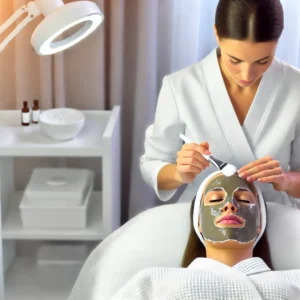Root Canal Treatment (RCT), also known as endodontic therapy, is a dental procedure used to save a tooth that has become severely infected or decayed. During RCT, the dentist or endodontist removes the infected pulp (soft tissue inside the tooth that contains nerves and blood vessels), cleans the inside of the tooth, and seals it to prevent future infection. Root canal treatment is performed to alleviate pain, stop the spread of infection, and save the natural tooth.
Reasons for Root Canal Treatment
- Deep Decay: Severe tooth decay that reaches the pulp can cause an infection that may require RCT to prevent further damage.
- Cracked or Broken Tooth: A tooth that is cracked or broken, allowing bacteria to reach the pulp, may need root canal treatment to remove the infection and preserve the tooth.
- Abscess: An abscess is a pocket of pus that forms at the root of an infected tooth, often causing pain and swelling. RCT can help eliminate the infection and prevent complications.
- Pulp Injury: Trauma to the tooth, such as a severe impact, can damage the pulp, leading to infection or inflammation. Root canal treatment is needed to save the tooth and alleviate symptoms.
- Repeated Dental Procedures: Multiple dental procedures on a single tooth can irritate and damage the pulp, leading to infection and the need for RCT.
Symptoms Indicating a Need for Root Canal Treatment
- Severe Toothache: Persistent or severe tooth pain, especially when chewing or applying pressure, may indicate an infected or damaged pulp.
- Sensitivity to Temperature: Prolonged sensitivity to hot or cold temperatures, even after the source is removed, may suggest pulp inflammation or infection.
- Swollen or Tender Gums: Swelling, tenderness, or a bump (abscess) on the gums near the affected tooth may be a sign of infection.
- Darkened Tooth: A tooth that becomes discolored may indicate damage to the nerve within the pulp.
- Pimple on the Gums: A pimple-like swelling (fistula) on the gums near the affected tooth that releases pus may be a sign of an abscess.
How Root Canal Treatment is Performed
- Consultation and X-Rays: The dentist examines the tooth and takes X-rays to assess the extent of the infection and determine if RCT is necessary. The X-rays help visualize the shape of the root canals and detect any infection in the surrounding bone.
- Local Anesthesia: The area around the affected tooth is numbed with local anesthesia to ensure that the patient is comfortable during the procedure. If the tooth is abscessed, it may take longer for the anesthesia to take full effect.
- Access Opening: The dentist creates a small opening in the crown of the tooth to access the pulp chamber and root canals.
- Removal of Infected Pulp: Using specialized tools, the dentist removes the infected or damaged pulp from the pulp chamber and root canals. The canals are cleaned thoroughly to remove all traces of infection.
- Shaping and Cleaning: The root canals are shaped to prepare them for filling. The canals are cleaned and disinfected using antibacterial solutions to eliminate any remaining bacteria.
- Filling the Canals: After cleaning and shaping, the root canals are filled with a rubber-like material called gutta-percha. This helps seal the canals and prevents bacteria from re-entering.
- Temporary Filling: A temporary filling is placed to seal the access opening until the permanent restoration can be done. In some cases, a permanent filling or crown is placed during the same visit.
- Restoration: In a subsequent visit, the dentist may place a crown or a permanent filling to restore the tooth’s function and appearance. Crowns are often recommended for back teeth, as they provide strength and protection against fractures.
Benefits of Root Canal Treatment
- Pain Relief: RCT alleviates severe toothache and other symptoms caused by pulp infection or inflammation.
- Prevents Tooth Loss: By treating the infection and saving the natural tooth, RCT prevents the need for extraction and maintains natural tooth function.
- Stops the Spread of Infection: Root canal treatment removes bacteria and infected tissue, preventing the spread of infection to surrounding teeth and gums.
- Restores Function: The treated tooth can continue to function normally after being restored with a filling or crown.
Aftercare for Root Canal Treatment
- Pain Management: After the procedure, some discomfort or sensitivity is normal and can be managed with over-the-counter pain relievers, such as ibuprofen or acetaminophen. Your dentist may also prescribe medication if needed.
- Avoid Hard Foods: Avoid chewing on the treated tooth until the permanent restoration is completed, as the tooth may be fragile after the RCT.
- Oral Hygiene: Maintain good oral hygiene by brushing twice a day, flossing daily, and using an antibacterial mouthwash. Proper oral care helps prevent future infections and complications.
Recovery Timeline
- First Few Days: It is normal to experience some sensitivity or discomfort after the treatment. This should subside within a few days.
- Follow-Up Visits: A follow-up visit is needed to restore the tooth permanently with a crown or filling. This is crucial for the long-term success of the treatment.
- Long-Term Recovery: Once fully restored, a root canal-treated tooth can last for many years with proper care and regular dental check-ups.
Potential Complications
- Incomplete Removal of Infection: In rare cases, the entire infection may not be removed, requiring retreatment or other procedures.
- Cracked Root: If the root of the tooth is cracked, the treatment may not be successful, and extraction may be necessary.
- Post-Treatment Infection: If bacteria re-enter the root canals after treatment due to a loose filling or crown, an infection may recur, requiring retreatment.
Myths About Root Canal Treatment
- “Root Canals Are Painful”: This is a common misconception. Modern techniques and anesthesia make root canal treatment relatively painless. The pain experienced is usually from the infection, and RCT actually helps alleviate it.
- “Root Canals Are Not Necessary”: Some people believe that extraction is a better alternative, but preserving the natural tooth is always preferable when possible. Root canal treatment saves the natural tooth and maintains normal function.
- “Root Canals Take Many Visits”: Depending on the condition of the tooth, a root canal can often be completed in one or two visits.
Alternatives to Root Canal Treatment
- Tooth Extraction: In cases where RCT is not possible, the tooth may need to be extracted. After extraction, options for replacing the missing tooth include dental implants, bridges, or dentures.
- Pulp Capping: In some cases of minor pulp exposure, a dentist may opt for a pulp capping procedure instead of RCT, placing a medicated dressing over the pulp to protect it and encourage healing
Other Services
- Esthiderm facial with Baby Botox Mesotherapy
- Radio frequency for lifting and infusing collagen
- Esthiderm facial with lifting mask
- Hair Scalp HydraFacial
- Root Strengthening and Hair Growth Treatment
- Hair Loss Treatment
- Meso Therapy
- Meso Botox
- Chemical Peeling
- Aqua Gold
- PRP
- Dark Circles
- Pigmentations
- Instant Glow Vitamins
- Open Pores
- Acne Scars
- Intensive Hyaluronic Treatment
- Intensive Vitamin C Treatment
- Black & White heads removal (Manual extraction)
- Hydrafacial (With Microdermabrasion)
- OxyGeneo Treatment
- HYDRAFACIAL WITH DETOX
- HYDRAFACIAL WITH VITAMINS
- DEEP HYDRAFACIAL
- Male laser Hair Removal
- Female hair removal laser
- INVISALIGN
- FLOURIDE APPLICATION
- ZIRCONIA CROWNS, BRIDGES
- NIGHT GUARD
- SIMPLE EXTRACTIO
- SURGICAL EXTRACTION
- VENEERS PER TOOTH
- FILLINGS
- SNAP ON SMILE (UPPER/LOWER)
- Home kit whitening
- Retreatment
- NANO TEETH WHITENING
- SCALING AND POLISHING



